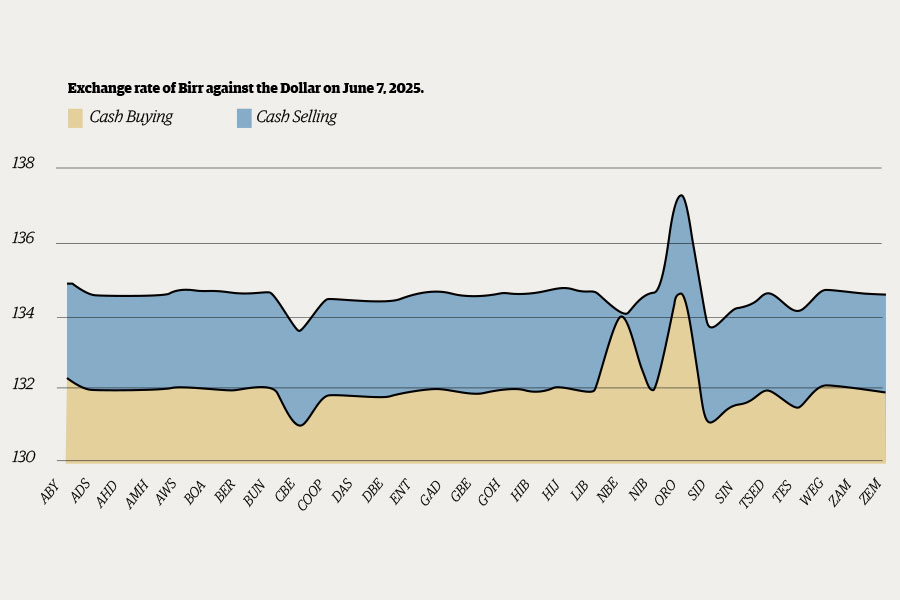
Agenda | Jul 01,2023
Aug 25 , 2024
By Adam Posen
This year's Jackson Hole Economic Symposium, which brings together central bankers from around the world, is right to focus on the monetary transmission mechanism, the channel through which monetary policy influences broader economic and financial conditions. Although the US Federal Reserve raised interest rates by 500 basis points between March 2022 and July 2023, it seems that little damage has been done to the US real economy or its financial system.
This low cost of disinflation is shocking (though certainly welcome). Even if we have strong hypotheses to explain ex post why the United States has been able to combine growth with disinflation for the last two years – notably high immigration, a surge in productivity, and (above all) well-anchored inflation expectations – the lack of a visible direct impact from rate increases is remarkable.
Evidently, current US monetary policy is meaningfully looser than many Federal Open Market Committee (FOMC) members and market participants think it is. What is more, the impact of monetary policy on the economy is more conditional and probably weaker on average than commonly believed. This assessment is directly relevant to the FOMC's upcoming monetary-policy choices but even more so to policymaking further in the future.
This past June, multiple FOMC members expressed concern that monetary conditions have been tightening further as declines in inflation lead to higher real interest rates. But, this view fails to account for the magnitudes and channels of monetary transmission. Here, the focus on the policy instrument, the federal funds rate, is misleading. It is a mistake to assume that the settings of the instrument are close to optimal at any given time, or that they must be fine-tuned with each twist and turn in the inflation forecast.
The assessment of monetary conditions should focus more on actual financial-market outcomes than on preconceived notions of the effect of policy.
As we saw with the 2008 global financial crisis, financial markets are segmented, and central banks often must intervene directly in particular markets to have an impact. For example, interest rates and (the lack of) supervision affect commercial lending by non-bank financial intermediaries differently than traditional bank lending. Private equity and unlisted investments react differently to policy adjustments than commercial paper, bonds, and even traded equities do. Even in the absence of financial-liquidity constraints, regulation and international barriers impede the transmission of credit flows uniformly across jurisdictions.
Thus, as a forward indicator, financial conditions are at least as important as the slightly backwards-looking signals sent by the labour market. Financial indicators remain quite accommodative. Equities have returned to high valuations, and the decline in longer-term Treasury rates has persisted. Interest-rate spreads (such as those between lower-rated corporate bonds and comparable duration Treasuries) have widened somewhat but remain very low by historical standards, let alone for the end of a Fed tightening cycle.
The same holds true for delinquent auto and consumer loans and for real-estate losses. These have come off their lows, but not by much. It is rather odd to call monetary policy "tight" when credit remains easy and balance sheets are barely distressed.
Another problem with focusing primarily on changes in the real federal funds rate (assuming all else is equal) is that it ignores a more important benchmark for the impact of monetary policy: where that interest rate is about the neutral interest rate (r*), the rate where monetary policy is neither "loose" nor "tight" for an economy growing near trend. The gap between the underlying long-term return to safe capital in the economy and what the Fed sets as the minimum lending rate for very short-term loans thus reflects the traction of monetary policy on the economy. If the neutral rate has moved up a lot, any rise in real rates as inflation declines could be more than offset.
As Fed Chair Jerome Powell rightly pointed out at previous Jackson Hole conferences, the economic stars (neutral interest and unemployment rates) are not directly observable, or even robustly estimated. Yet there are overwhelming reasons to believe that r* has risen substantially above its pre-COVID levels, meaning that monetary-policy settings have become looser over time. Foremost, US federal deficits are much higher on a sustained basis, and spending on defence, environmental, and industrial policies will keep them up. These additional outlays will drive up rates on government borrowing, which is a key determinant of r*.
At the same time, Chinese and American officials alike are discouraging capital flows from Chinese investors into US markets, shrinking the pool of savings available to finance US deficits – which also increases long-term rates. But after the pandemic, US savings rates fell as consumers bought into a "YOLO" (you only live once) mindset and internalised the lesson that there will always be government support in times of crisis (thankfully). Again, this will cause rates to go up as debt levels rise.
Finally, if the recent acceleration in productivity growth is sustained – perhaps because AI or green-tech becomes more widespread – that, too, will raise the real return on capital, and thus r*. However, when one weighs these various factors, all trends point to an increase in r* by as much as 1.5pc.
To be sure, the fact that US monetary policy is looser than many believe should not discourage the Fed from cutting rates in September and November. From a risk-management perspective, if inflation is forecast to continue on a downward trend and unemployment is rising, loosening policy to forestall a recessionary slide is prudent (at least until the economic impact of November's US election becomes clear next year).
But, warnings that Fed policy is potentially dragging the economy down are unjustified. When the US economy proves resilient yet again, and the time for rate increases returns, the FOMC should be prepared not only to raise rates more than it is used to, but also to track how its hikes transmit across diverse financial markets.
PUBLISHED ON
Aug 25,2024 [ VOL
25 , NO
1269]


Agenda | Jul 01,2023

Editorial | Feb 24,2024


Money Market Watch | Jun 08,2025

Fineline | Jul 27,2019

Photo Gallery | 176353 Views | May 06,2019

Photo Gallery | 166567 Views | Apr 26,2019

Photo Gallery | 157060 Views | Oct 06,2021

My Opinion | 136904 Views | Aug 14,2021

Dec 22 , 2024 . By TIZITA SHEWAFERAW
Charged with transforming colossal state-owned enterprises into modern and competitiv...

Aug 18 , 2024 . By AKSAH ITALO
Although predictable Yonas Zerihun's job in the ride-hailing service is not immune to...

Jul 28 , 2024 . By TIZITA SHEWAFERAW
Unhabitual, perhaps too many, Samuel Gebreyohannes, 38, used to occasionally enjoy a couple of beers at breakfast. However, he recently swit...

Jul 13 , 2024 . By AKSAH ITALO
Investors who rely on tractors, trucks, and field vehicles for commuting, transporting commodities, and f...

Oct 18 , 2025
The political establishment, notably the ruling party and its top brass, has become p...

Oct 11 , 2025
Ladislas Farago, a roving Associated Press (AP) correspondent, arrived in Ethiopia in...

Oct 4 , 2025
Eyob Tekalegn (PhD) had been in the Governor's chair for only weeks when, on Septembe...

Sep 27 , 2025
Four years into an experiment with “shock therapy” in education, the national moo...

Oct 18 , 2025 . By NAHOM AYELE
In a sweeping reform that upends nearly a decade of uniform health insurance contribu...

A bill that could transform the nutritional state sits in a limbo, even as the countr...

Oct 18 , 2025 . By SURAFEL MULUGETA
A long-planned directive to curb carbon emissions from fossil-fuel-powered vehicles h...

Oct 18 , 2025 . By BEZAWIT HULUAGER
Transaction advisors working with companies that hold over a quarter of a billion Bir...